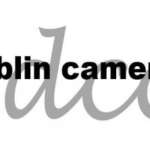Considering a Calligraphy Course?
If you want to advance your hobby in calligraphy or work in calligraphy, it is an excellent idea to do a calligraphy course. A calligraphy course will teach you everything you need to know about calligraphy and how to do it. Hobbies are incredibly important for our wellbeing and allow us to relax and escape our minds. The good news is there are tons of calligraphy courses currently available. They offer good flexibility too for those of us leading busy lives. Calligraphy courses are available in part-time, evening class and online options.
What Is Calligraphy?
Calligraphy, although thought of as simply beautiful handwriting or ornate lettering techniques, it is much more than that. Rather, calligraphy is the art of forming beautiful symbols by hand and arranging them well. It is truly a set of techniques and skills for positioning and inscribing words so that they show harmony, integrity, some kind of ancestry, creative fire and rhythm. In addition, you could say that reading calligraphy is the closest that you will get to hearing music with your eyes.
A Brief History of Calligraphy
From the moment humans began speaking, they have supplemented their sounds with gestures. Writing came in as an extension of this gesturing. Writing was a way to make motion memorable, visible and lasting. For thousands of years, people used whatever tools they had on hand to write, whether that was a sharp object to scratch or dent or colour substances from vegetables to use as powders and inks. Writing letters with a pen is one of the many ways that people have come up with to make speech appear visible.
The origin of Calligraphy with brushes dates way date to ancient China during the Shang dynasty becoming more common during the Han dynasty around 206 BCE to 220 CE where it was expected for all educated men and some of the women to be proficient at it. The next thing to influence calligraphy was the Western script evolved from Phonicia in around 1200 BC. From this point, letterforms would continue to evolve and would be borrowed by the Etruscans and in turn by the Romans. The rest of the Western scripts evolved from the Roman originals.
From there came the Celtic scribes of the Dark Ages and the Gothic scribes of the Middle Ages. They worked indoors and used small pens that were made out of feather quills to write small letters. Their primary concern was to copy, glorify and preserve the text of the Christian religion. Then, during the Renaissance, Roman and Greek ideas were rediscovered and with them, the formally carved capitals of classical inspiration and the pen capitals of early manuscripts were brought back to light.
At the same time, the invention of movable type and adoption of papermaking technology from Central Asia assisted the printing press in replacing the scribe as a main way to produce and reproduce books. It was from this point that the master typographers perfected the design, cutting, casting and setting of mechanically perfect type fonts. Each book was written in these fonts and the more people began writing letters in this style. Now, in the 21st century, calligraphy thrives as an art form.
What Will I Learn?
Doing a calligraphy course, you can expect to learn the five different hands or styles spanning from the 4th century to modern day free-style brush lettering. You will also learn classic calligraphy scripts such as Celtic uncial, italic, gothic and copperplate cursive. You can expect to do class projects surrounding the mentioned areas of study also.
If you’re serious about doing a calligraphy course, check out courses near you in the Nightcourses.co.uk national course finder.







